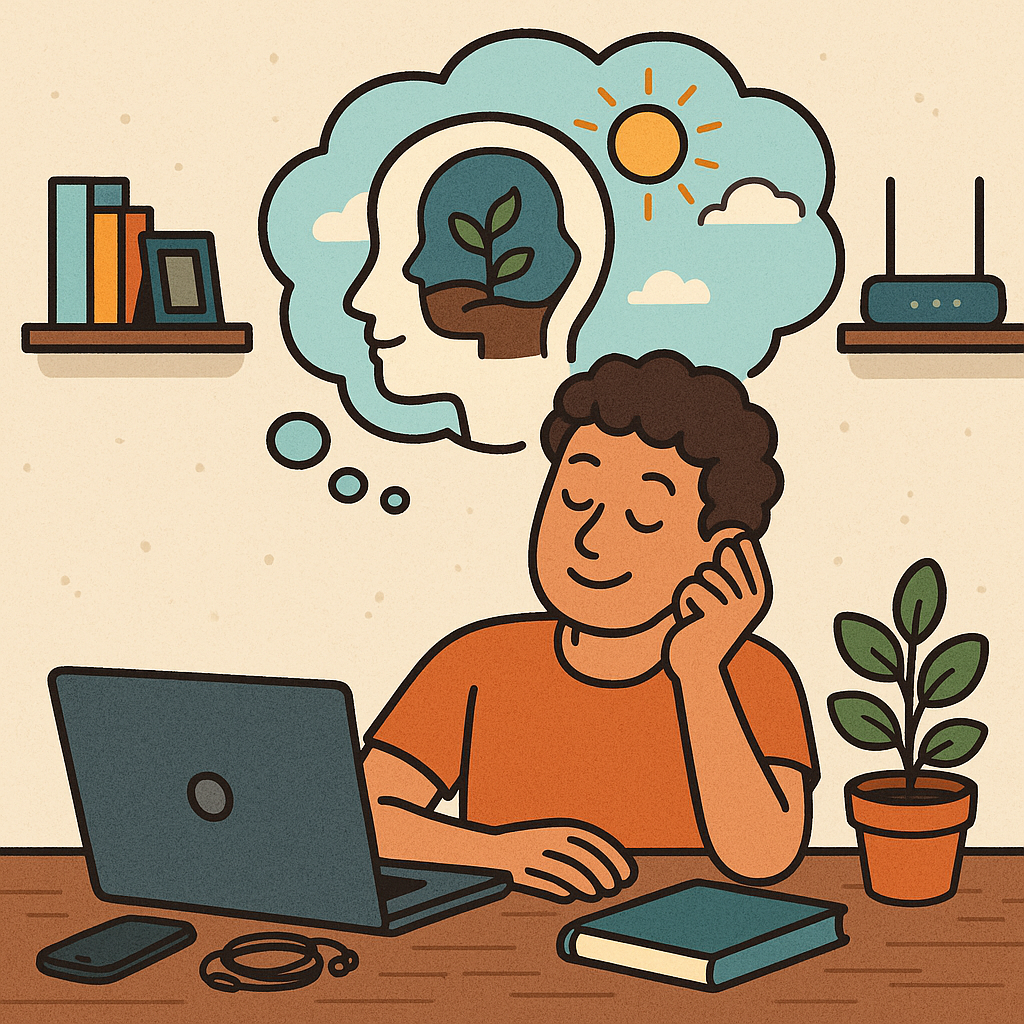Every time you unlock your device, digital clutter greets you—unread emails, endless app notifications, and messy desktops. It’s no wonder our minds feel overwhelmed. Today, more than ever, cultivating tidy tech habits for mental space isn’t just trendy—it’s vital. This practical guide explores emerging trends and science-backed techniques to help you reclaim clarity and reduce tech-induced stress.

Why Tidy Tech Habits for Mental Space Matter
No one talks about how a cluttered inbox or a chaotic desktop impacts well-being—but they do. Digital clutter triggers stress responses much like physical mess does. In fact, research shows that disorganized digital environments spike cortisol levels and impair focus.
Another study found that multitaskers with visually cluttered screens perform worse at switching tasks and maintaining concentration.
Emerging Trend: Weekly “Digital Reset Saturdays”
A growing practice among productivity communities is the “Digital Reset Saturday”—a designated weekly ritual to tidy digital spaces:
- Clear inbox and unsubscribe from unwanted newsletters.
- Archive old messages and label important emails.
- Delete unused apps and leave only what you use.
- Organize files—use folders and eliminate duplicates.
This fits well into a calmer digital lifestyle, supported by evidence showing that even occasional decluttering boosts mental clarity and reduces anxiety.
5 Actionable Tidy Tech Habits to Try Today
1. Inbox Zero One-Off
- Unsubscribe aggressively with tools like Unroll.Me.
- Archive or delete emails older than 30 days.
- Create filters to auto-file inbound messages.
This won’t just reduce mental overload—it recovers mental bandwidth.
2. Minimalist Home Screen
- Remove apps you don’t use weekly.
- Group essentials into folders by category (e.g., Social, Productivity).
- Move distractions off your first screen to use only when needed.
3. Single-Tab Browser Mode
- Use extensions like OneTab to convert multiple tabs into an organized list.
- Allow max 5 open tabs; bookmark others for reading.
This helps prevent cognitive load and decision fatigue.
4. Declutter Digital Media
- Yearly or quarterly: delete duplicate photos and videos.
- Organize photos into clearly named folders.
- Consider cloud services with clean-up features.
These habits keep your device—and mindset—fresh and responsive.
5. Automate Routine Tasks
- Use IFTTT or Zapier to auto-sort files or sync calendar events.
- Auto-archive emails from automated alerts.
- Set reminders for weekly resets or monthly backups.
Automation keeps your digital space consistently tidy with little effort.
How These Habits Support Mental Space
- Reduced decision fatigue: fewer distractions equal more mental focus.
- Lower stress levels: visual clutter constantly demands attention—clean spaces calm the mind .
- Boosted productivity: you spend less time hunting for files or clearing tabs.
- Improved digital wellbeing: mindful tech use builds healthier routines and boundaries.
Expert Tip: Blend Tidiness With Self-Care
Digital cleanliness does more than clear your screen—it supports mental health. A study from Cleveland Clinic found that visible order on a device reduces anxiety and improves perceived control. Integrate tidy habits with self-care rituals:
- Morning ritual: Start your day with a 5-minute inbox refresh.
- Evening wind-down: Close tabs, toggle on Do Not Disturb, and archive today’s messages.
- Weekend refresh: Schedule a weekly appointment with your digital world—clean, archive, and update.
Integrating Tidy Tech Habits With Physical Well‑Being
A digital detox doesn’t require a remote cabin—it can be as simple as starting nights device-free, letting your mind settle without screen interference. The Oxford-defined digital detox—optional disconnect to reduce dependency—links directly to mental space restoration . Pair it with a bedtime tech boundary to support sleep quality and mental clarity.
Case Study: Designers & Developers Leading the Way
Many professionals in creative and tech industries swear by the “One Tab, One Task” philosophy:
- They launch only one application at a time.
- They avoid multitasking to preserve creativity and reduce stress.
- They conclude meetings with archiving and housekeeping as a ritual.
This strategy reduces mental friction and enhances flow—and these professionals report less burnout and sharper focus.
Daily, Weekly, Monthly Habit Summary
| Frequency | Actions |
|---|---|
| Daily | • Archive/delete unwanted emails • Close unnecessary tabs • Reflect on usage |
| Weekly | • Unsubscribe, file, organize • Clean media libraries • Review app usage |
| Monthly | • Automate new routines • Full backup & system update • Export important files |
Final Thoughts
Tidy tech habits aren’t just about organization—they’re about mental space. In a world saturated with digital noise, small, consistent efforts can help your mind breathe again. Whether it’s a weekly reset, app cleanup, or tab limitation, each habit returns a fragment of focus, calm, and clarity. Start today: pick one habit, apply it, and observe how your digital order transforms your mind.
References
Albers, S. (2024). Clearing Out Digital Clutter. Cleveland Clinic Newsroom.
https://newsroom.clevelandclinic.org/2024/01/24/clearing-out-digital-clutter
Lifecycle Transitions. (2024). The Hidden Impact of Digital Hoarding on Mental Health. newsroom.clevelandclinic.orglifecycletransitions.com
Stanford BeWell. (2016). A Clean, Well‑Lighted Place. https://bewell.stanford.edu/a-clean-well-lighted-place/






